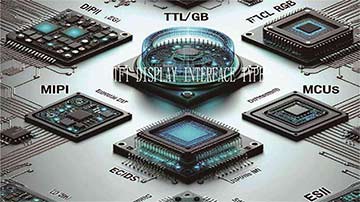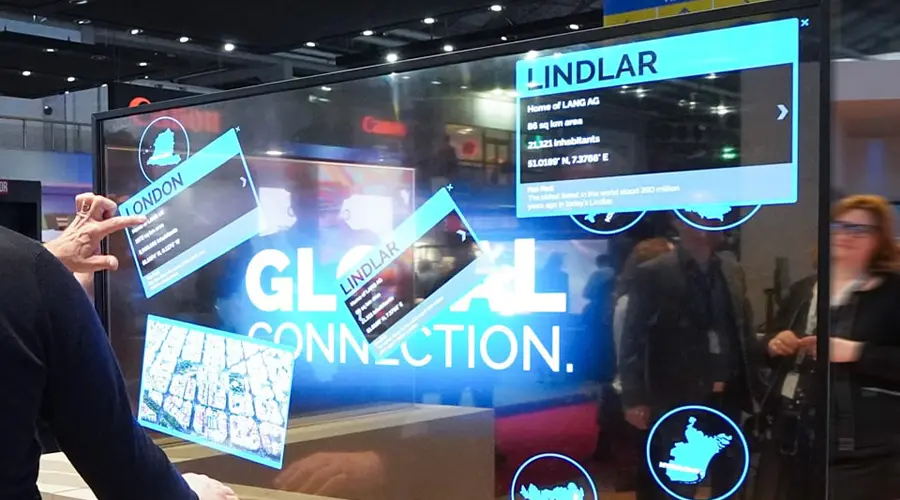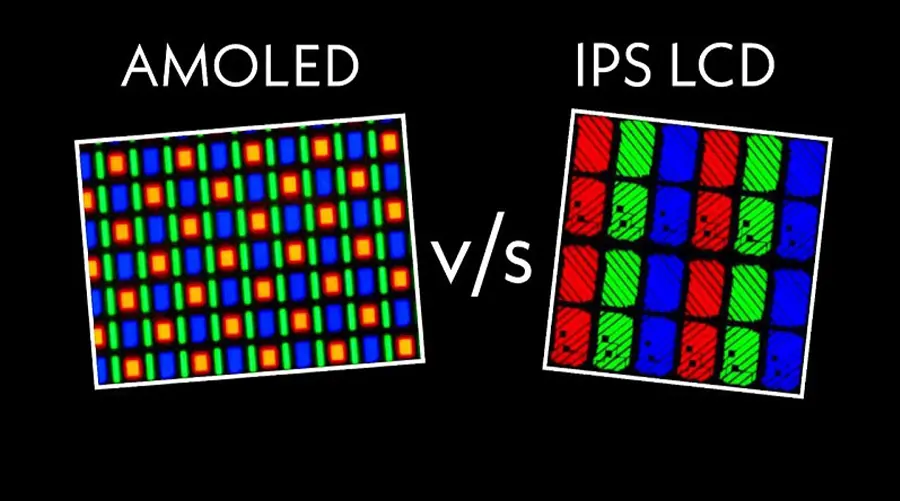TFT (Thin Film Transistor) LCD displays use various interfaces to transmit signals from the controller to the display module. These interfaces are designed to meet different performance and compatibility requirements, ranging from simple low-resolution screens to high-definition displays with advanced features. Here, we will discuss the most common TFT LCD display interfaces: MIPI, TTL/RGB, MCU, LVDS, EDP, and SPI.
1. MIPI (Mobile Industry Processor Interface)
- Overview: MIPI (Mobile Industry Processor Interface) is a standard interface defined by the MIPI Alliance for mobile applications. It supports both video data and control commands, making it suitable for high-resolution displays in portable devices.
- Signal Types:
- Data Lanes: The number of lanes (1, 2, 3, 4, 8) depends on the resolution and bandwidth requirements of the display.
- Clock Signal: A separate clock signal is used for synchronization.
- Control Signals: Includes DE (data enable), HS (horizontal sync), and VS (vertical sync) signals for timing and synchronization.
- Usage: Primarily used in portable devices like smartphones, tablets, and other high-resolution displays due to its compact size and high data transfer rates.

2. TTL/RGB
- Overview: TTL (Transistor Transistor Logic) is a parallel interface that directly outputs RGB data from the controller to the display. It uses high signal voltages and is suitable for driving small to medium-sized displays with lower resolutions.
- Signal Types:
- RGB Data Signals: These include red (R), green (G), and blue (B) data lines. The number of bits per color channel determines the total number of RGB data lines. For example, an 18-bit interface has 18 data lines (6 bits for R, G, and B each).
- Control Signals: Data enable (DE), horizontal sync (HS), and vertical sync (VS) signals control the timing and synchronization of the display data.
- Pixel Clock: This signal synchronizes the data transfer rate.
- Usage: Commonly used for small to medium-sized displays with lower resolutions due to its simplicity and low cost.

3. MCU (Micro Control Unit)
- Overview: MCU (Micro Control Unit) interfaces are used for small displays and are capable of writing and reading data stored in internal frame buffers or gadget memory.
- Signal Types:
- Besturingssignalen: RD (lezen inschakelen), WR (schrijven inschakelen), RS (register selecteren) en CS (chip selecteren) worden gebruikt voor het besturen van de interface.
- Datasignalen: Afhankelijk van de interface kunnen datasignalen 18 bits, 16 bits, 9 bits of 8 bits zijn.
- Gebruik: Geschikt voor kleine beeldschermen tot 5 inch met een resolutie van 480 RGB 800 of lager.

4. LVDS (Laagspanningsdifferentiële signalering)
- Overzicht: LVDS is een differentiële signaleringsinterface die is ontworpen om de beperkingen van TTL, zoals een hoog stroomverbruik en elektromagnetische interferentie (EMI), te overwinnen. Het werkt op veel lagere spanningen en stroomsterktes, waardoor het geschikt is voor displays met een hoge resolutie.
- Signal Types:
- Datadifferentiële paren: LVDS gebruikt paren van complementaire signalen (bijv. Y0M/Y0P) om data te verzenden. Het aantal dataparen is afhankelijk van de resolutie en kleurdiepte van het scherm.
- Differentieel klokpaar: een speciaal paar (CLKOUT_M/CLKOUT_P) vervoert het pixelkloksignaal voor synchronisatie.
- Stuursignalen: Net als TTL bevat LVDS DE-, HS- en VS-signalen voor timing en synchronisatie.
- Gebruik: Breed toegepast in beeldschermen met hoge resolutie, industriële apparatuur en automobieltoepassingen vanwege de lage EMI en hoge gegevensoverdrachtssnelheden.

5. EDP (Embedded DisplayPort)
- Overzicht: EDP (Embedded DisplayPort) is een digitale interface gebaseerd op de DisplayPort-architectuur en het DisplayPort-protocol. Het biedt eenvoudigere connectoren en minder pinnen in vergelijking met LVDS, waardoor het geschikt is voor beeldschermen met hoge resolutie in draagbare apparaten.
- Signal Types:
- Hoofdverbinding: vervoert video- en audiogegevens met behulp van één tot vier paren differentiële signalen.
- Hulpkanaal (AUX CH): Wordt gebruikt voor gegevens, linkbeheer en apparaatbesturing.
- Hot Plug Detect (HPD): geeft aan of er een beeldscherm aanwezig is.
- Gebruik: Veelvoorkomend in beeldschermen met een hoge resolutie in draagbare apparaten zoals laptops, tablets en smartphones.

6. SPI (seriële perifere interface)
- Overzicht: SPI is een synchrone seriële interface die veel wordt gebruikt voor beeldschermen met een lage resolutie en apparaten die slechts een klein aantal pinnen nodig hebben.
- Signal Types:
- 3-draads SPI: SDA (gegevensinvoer/-uitvoer), SCL (seriële klok) en CS (chipselectie).
- 4-draads SPI: SDA, SCL, CS en RS (gegevens-/opdrachtenselectie).
- Gebruik: Geschikt voor kleine toepassingen, zoals slimme wearables en kleine apparaten.

Conclusie
Elk interfacetype heeft zijn eigen sterke en zwakke punten, waardoor ze geschikt zijn voor verschillende toepassingen. De keuze van de juiste interface hangt af van de specifieke eisen van het scherm, zoals resolutie, kleurdiepte en stroomverbruik. Of u nu een eenvoudige interface nodig hebt voor een scherm met lage resolutie of een snelle interface voor een scherm met hoge definitie, inzicht in de mogelijkheden en beperkingen van elke interface is cruciaal voor optimale prestaties en kosteneffectiviteit.
Dit overzicht biedt een uitgebreid en professioneel inzicht in de zes meest voorkomende interfacetypen die worden gebruikt in TFT LCD-schermen.
Laatste artikelen
-
Waarom 1-2" AMOLED's de sleutel zijn tot AR/XR in 2025
Waarom 1-2 inch AMOLED-schermen essentieel worden in de AR/XR-hausse (2025 Industry Insight)body {f
-
Understanding OLED Display Technology: Principles, Performance & Applications
OLED (Organic Light Emitting Diode) displays are a class of self-emissive display technology in whic
-
From Wearables to AR Glasses – How OLED Displays Are Redefining Visual Experiences in 2025
By 2025, OLED (Organic Light-Emitting Diode) technology has transitioned from luxury smartphone disp
-
LCD-schermen met uitgerekte staven voor de detailhandel: verhoog de omzet en betrokkenheid in supermarkten
Ontdek hoe LCD-schermen met uitgerekte staven de marketing in de supermarktschappen verbeteren, de verkoop stimuleren en de kosten verlagen.
-
Uitgerekte LCD-oplossingen voor restaurants en horecagelegenheden
Uitgerekte LCD's bieden strakke, zeer heldere displays die perfect zijn voor restaurantmenu's en horecagelegenheden.




